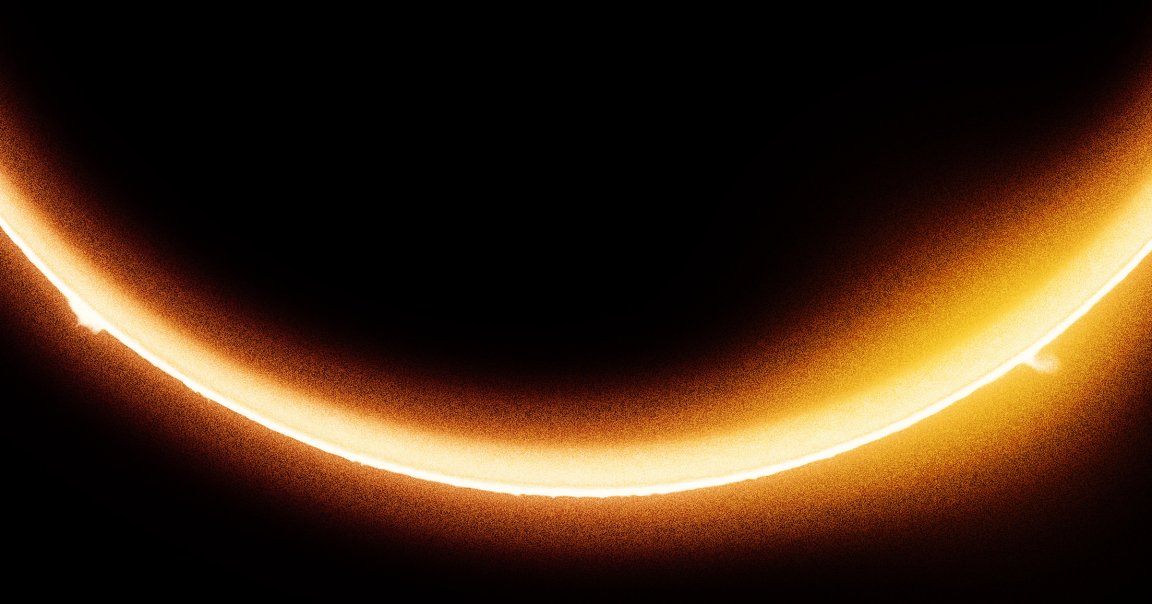
Astronomers have gotten an unprecedented view of the bottom of the Sun.
On Wednesday, the European Space Agency shared images that show, in all its tumultuous glory, our star’s secretive south pole.
Captured by the Solar Orbiter spacecraft, the stunning achievement has paved the way towards solving some of the Sun’s most abiding mysteries, and could even provide us the insight needed to predict some of the star’s volatile behavior that can disrupt our modern infrastructure on Earth.
“Today we reveal humankind’s first-ever views of the Sun’s pole,” said Carole Mundell, the ESA’s director of science, in a statement. “These new unique views from our Solar Orbiter mission are the beginning of a new era of solar science.”
Our entire existence is centered on the life-giving Sun — but our view of it remains embarrassingly limited. We’re only seeing its equator, because, like every planet in the solar system, the Earth is locked into the same unchanging orbit, known as the ecliptic plane, around the star.
To an extent, so are our spacecraft. Breaking free of the ecliptic plane is an immensely fuel-intensive maneuver, and until now, only the ESA/NASA Ulysses mission, which launched in 1990 and ended in 2009, has flown high enough to see the Sun’s poles. Unfortunately, it didn’t have cameras to capture any images.
To pull off its escape act, the Solar Orbiter performed several flybys past Venus, the second planet from the Sun, to get a gravity assist. Once it built enough speed, the spacecraft hurtled itself out of the ecliptic plane and reached a maximum viewing angle of 17 degrees below the solar equator.
“We didn’t know what exactly to expect from these first observations — the Sun’s poles are literally terra incognita,” Sami Solanki, director of the Max Planck Institute for Solar System Research in Germany, who leads a scientific team in charge of one Solar Orbiter’s onboard instruments, said in the statement.
The orbiter caught the Sun’s poles at a bit of an odd moment, however. Right now, the star, as part of its 11-year solar cycle, is nearing the end of its solar maximum, a period of heightened activity in its magnetic field, causing an uptick of its awesome outbursts like solar flares and sunspots.
In the recent images taken with the spacecraft’s Polarimetric and Helioseismic Imager, the strongest bands of magnetic activity, represented in dark red and dark blue blotches, fall over the Sun’s equator where those outbursts occur.
But most relevant here is that the solar maximum culminates in the Sun’s magnetic field completely flipping — which makes for quite a mess at the top and bottom. As seen in the PHI view, the southern pole shows signs of both north and south polarity magnetic fields, and all very weak compared to the equator. In other words, right now our host star has no clear north and south pole.
This is only temporary, and in about five to six years from now the star will again reach its solar minimum. Activity will calm down, and the poles will be restored to order. Or at least, that’s the theory.
“How exactly this build-up occurs is still not fully understood, so Solar Orbiter has reached high latitudes at just the right time to follow the whole process from its unique and advantageous perspective,” Sami said.
After years of collecting data with the Solar Orbiter’s Spectral Imaging of the Coronal Environment instrument (SPICE), which can detect and track the presence of specific elements, scientists have also been able to measure how solar material travels through the layers of the Sun. This could be crucial in unearthing the origins of the solar wind, a powerful gust of energetic particles that are flung off the Sun at tremendous speeds and wash over the entire solar system.
And there’s more coming down the pipe. The Solar Orbiter has already taken shots of the solar north pole, which are expected to reach Earth this November. The spacecraft will continue flying at its current angle until December 2026, when it will perform another flyby of Venus to reach an even higher orbit of 24 degrees.
More on: New Imaging Technique Makes the Sun Look Like a Swirling Pink Liquid